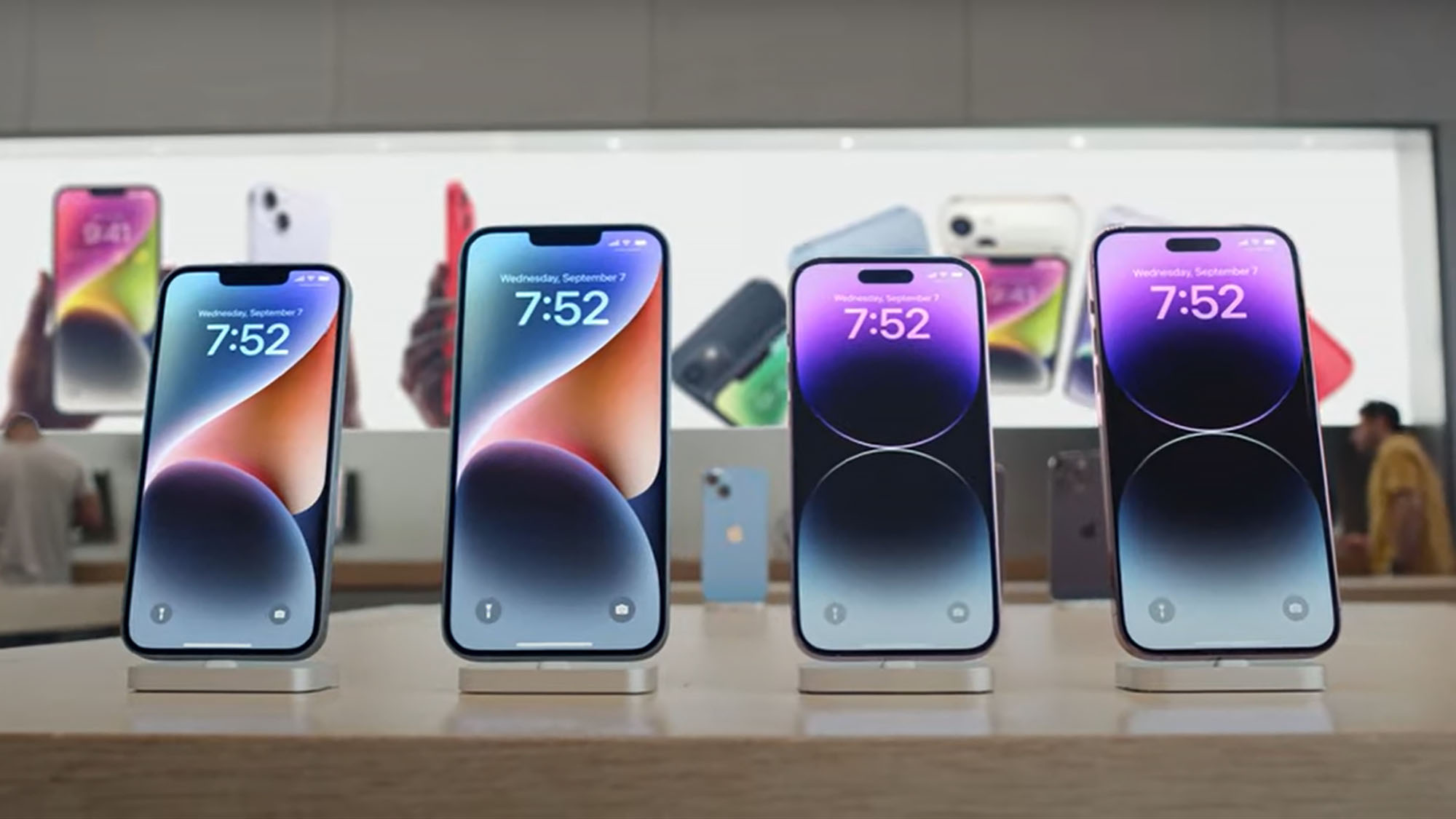Does the iPhone 14 have USB-C?
Double standard

The iPhone 14, and its Pro siblings, were finally revealed at Apple’s Far Out event on September 7. Highlight features include an incredible new 'Dynamic Island' on the Pro models, improved cameras, and the option to contact emergency services via satellite. But one point of contention remains, in the physical connection standard these phones rely upon.
As reports had previously suggested, the iPhone 14 and iPhone 14 Pro models do not include USB-C connectivity. Instead, Apple’s latest and greatest iPhones stick with their proprietary Lightning connector, which turns ten years old, as of 2022.
That means the iPhone 15 – likely to arrive in 2023 – is now expected to be the first iPhone that comes packing the refreshed port, and even then it’s only likely to change because of an EU ruling.
So, why does USB-C matter? And what’s wrong with Lightning, anyway? First, it’s important to find out why Apple is under such regulatory pressure.
Under pressure
Earlier this year, an EU agreement ruled that all smartphones will be required to use the same charging port connector type – USB-C.
For most brands, like Samsung, Google, and plenty more, this is no issue, since USB-C has been prevalent ever since the demise of micro-USB, years ago. For Apple, though, this represents a potentially expensive change, since every single iPhone model (since 2012) still uses the company’s proprietary Lightning connector.
Apple has until 2024 to change over to USB-C, and the ruling likely arrived too late in the manufacturing process to change the 2022 iPhone 14’s ports. Still, the iPhone 15 is unlikely to get the same grace period.
Sign up for breaking news, reviews, opinion, top tech deals, and more.
What is the benefit of USB-C over Lightning?

The reason for the EU ruling is to minimize e-waste, by allowing smartphone chargers to remain in use for years and go from device to device, but there are plenty of benefits for consumers, too.
For one, USB-C allows for faster data transfer speeds for anyone that connects their phone to a PC or Mac via a cable. USB-C also offers higher charging speeds, even above Apple’s recent fast-charging advancements in the iPhone.
Another huge boon is that USB-C is platform agnostic. Since only Apple devices use Lightning, it can be frustrating to carry additional chargers. If you have a Nintendo Switch, MacBook, or even PlayStation 5 or Xbox Series S|X controller, you likely already have a USB-C cable that you could be using on your iPhone, as of next year.
It’s not all positive, though. Some users say that after repeated use, USB-C cables start to drop out of charging ports, whereas Apple’s Lightning connectors remain relatively sturdy.
Why won’t Apple transition iPhone to USB-C?
There are a few reasons why Apple isn’t keen on changing over. For one, the company is likely to make a fair amount of money licensing out the Lightning tech to third-party accessory manufacturers, while also pointing people to its own store for replacement cables.
Apple’s own “walled garden” ecosystem means they like to be able to oversee what users can and can’t do with an iPhone, and it has led to a more stable experience on iOS.
It also means that Apple has a little more control over what’s plugged into their devices. The Nintendo Switch is a great example, as owners have been able to bypass certain anti-piracy measures on the console through its USB-C port.
Do other Apple devices use USB-C?

What’s perhaps most surprising about Apple’s hesitance to jump to USB-C is that the company was one of the first big tech companies to spot its potential.
Back in 2015, Apple’s redesigned 12-inch MacBook was derided for only offering USB-C ports and requiring an array of dongles to read SD cards and connect to HDMI cables. To this day, all MacBooks have USB-C connections, and Apple has even added USB-C to all iPad models, except the base $329 entry.
In fact, the only other Apple devices that still use Lightning connectors other than the iPhone, are all variants of AirPods and many Beats headphones. Even then, the most recent Beats Fit Pro has moved to USB-C, with many suggesting that AirPods will soon follow suit.
If you've got a wealth of Lightning accessories already and are due an upgrade, check out our best iPhone deals, or consult our best iPhones guide first, to decipher which model best suits your needs.

Lloyd Coombes is a freelance tech and fitness writer for TechRadar. He's an expert in all things Apple as well as Computer and Gaming tech, with previous works published on TopTenReviews, Space.com, and Live Science. You'll find him regularly testing the latest MacBook or iPhone, but he spends most of his time writing about video games at Dexerto.